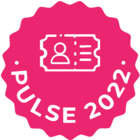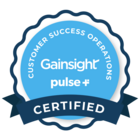Segments can be created to fetch a sub-group of customers, relationships, and contacts that meet your selected criteria using source objects. These Segments can later be used as one of the Source types, to add participants in Programs.
Detailed documentation,
*As of today, Segments can be used only to fetch participants in the Programs, but they’ll be available for Rules and Reporting in the future releases.
Usecase1: Inform all the SEA region CSMs regarding the upcoming summit!
Fetch list of companies from a particular region (ex. SEA region),
- Create Segment with Source ‘Company’
- Select the required fields
- Apply filter on region
- Schedule the segment to run at a desired time.
Usecase2: Inform all the admins regarding the upcoming release and new features!
Fetch list of Admins only,
- Create Segment with Source ‘Company Person’
- Select the required fields
- Apply filter on Role
- Schedule the segment to run at a desired time.
Usecase 3: Inform all the CSMs regarding upcoming maintenance for the ‘Mobile’ product!
Fetch list of Companies using product - ‘Mobile’,
- Create Segment with Source ‘Relationship’
- Select the required fields
- Apply filter on Product
- Schedule the segment to run at a desired time.




